There is so much buyer interest in the Ford Bronco – which isn’t electric – that Ford can’t build enough to meet demand and is actually offering people who ordered one $2,500 store credit to cancel their order in favor of something else.
Some have been waiting more than a year for a Bronco – which Ford revived for the 2021 model year (my review can be found here). It has been a hugely successful vehicle for Ford. It is – clearly – the kind of vehicle lots of people want to buy.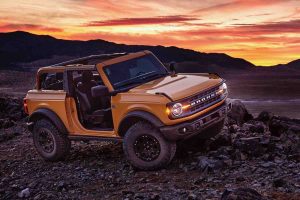
No subsidies – or mandates – needed.
In the old normal, Ford would build more Broncos to meet the market demand for them. The whole point of being in the car business once-upon-a-time being to sell as many vehicles as people wanted to buy. But we live in the New Abnormal. It is characterized by – among other things – the building of vehicles for which there isn’t market demand, because government requires them to be built.
Irrespective of whether they can be sold at a profit.
We all know which vehicles these are.
Two figures will make the point.
The first one is 39,458. This is the number of Mach-e “Mustangs” (my review of this one can be found here) that Ford sold last year (2022). The second number is 94,031. That is the number of Broncos Ford sold during the same time period. In other words, Ford sold more than twice as many Broncos as Mach-e “Mustangs” – and could have sold many more had there been more Broncos to sell.
That is to say, if Ford had built more Broncos.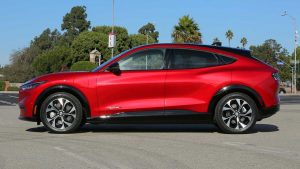
Which Ford could probably have done, had it not devoted manufacturing capacity and raw materials etc., to the building of Mach-e “Mustangs,” for which there is much less demand – and probably no profit, as the Mach-e is an EV and these have an established track record of being so expensive to build they must be sold at a loss.
It is also why – tellingly, though it seems almost no one wants to point out the elephant in the room – it continues to be necessary to subsidize them.
These were just renewed – after fifteen years of insisting they were “just a temporary leg-up,” needed to “encourage” the adoption of “new technology” (which battery-powered cars aren’t; in fact, they are 100-plus-years-old technology). Obviously, they still cost too much else it would not be necessary to reduce what they cost. Which just happened, again – in the form of price cuts that Ford announced just the other day. In normal times, a vehicle manufacturer does not cut the price of vehicles that sell. Price cuts are a sure sign of either of two things:
One, the vehicle isn’t selling or – two – it’s not selling because it’s too expensive. 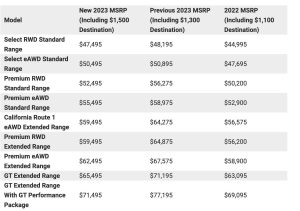
And the Mach-e is still very expensive, even though Ford just “cut” the price.
Well, sort of.
The “new” base price of the ’23 model has been “reduced” to $47,495 from $48,185 – which was the price of the ’23 model just a few weeks ago. But this is still $700 higher this week than it was a few weeks ago. It is like the chocolate ration in Orwell’s 1984 being “increased” by 5 percent this week – even though it had been cut by 5 percent the week before.
Hurrah for Big Brother!
Hurrah for the New Abnormal.
“Sales” – if that word can be used to describe a transfer at a loss – of the Mach-e “Mustang” are worse than they seem, too- when considered in context. For the Mach-e is a medium-small crossover SUV, not a “Mustang.” The point being that small crossovers are practical vehicles that can serve as family vehicles and for that reason have an inherently larger potential buyer pool to draw from. 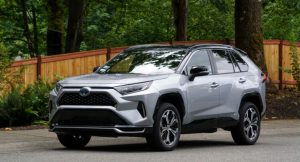
Assuming buyers want one.
This brings up another number that will make the point: 366,748. That is the number of RAV4s Toyota sold last year (2022). The RAV4 (my review of this one is here) and the Mach-e are essentially similar in general layout. Both are medium-small crossovers. The Ford is slightly longer overall but the RAV4 has slightly more cargo room (37.6 cubic feet behind its second row; 69.8 cubic feet with the second row folded – vs. 34.4 cubic feet behind the second row in the Mach-e and 64.4 cubic feet with the second row folded).
But there are some big differences.
The Ford can go a maximum of just 247 miles – assuming it’s not cold out – while the RAV4 can go at least 376 miles, no matter how cold (or hot) it is, as its range isn’t appreciably affected by temperature or the use of accessories such as the heater or air conditioner.
That’s in “city” driving.
On the highway, the RAV4 can take you more than 500 miles – or more than twice as far as the Mach-e and regardless of the temperature outside.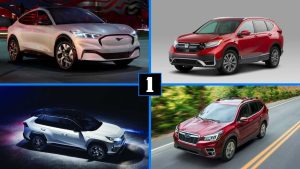
But the big number is this one: $25,575. That is the base price of a new RAV4. One could almost buy two RAV4s for the price of one Mach-e. And by purchasing just one, the buyer doesn’t spend $21,920 more – the difference in price between a new RAV4 and a new Mach-e.
And now you see why Toyota sells roughly nine times as many RAV4s as Ford sells Mach-e “Mustangs” – and does not have to resort to subsidizing them in order to “sell” them.
But perhaps the most telling number is the number of Broncos Ford has sold – especially given the context. The Bronco is not a practical vehicle. It is a jacked-up 4×4 designed for extreme off-roading. It is not especially comfortable. It gets terrible gas mileage (20 city, 21 highway). It is also a fairly expensive vehicle, with a base price of $32,295. The Raptor version ($73,780) costs even more than the Mach-e.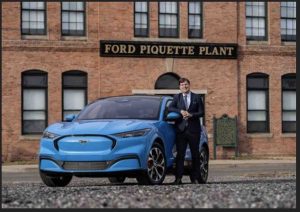
Yet Ford cannot meet demand for these things.
Rather, Ford will not meet demand for them. It probably could have, were it not so determined to build electric vehicles such as the Mach-e and F-150 Lightning, for which there isn’t much demand but which do divert a lot of resources and manufacturing capacity. But then, we are living in the New Abnormal era.
It involves what Ford’s CEO Jim Farley styles “fundamental change” and here is what he had to say about that the other day:
“Fundamental change for us is two things: Being able to have a digital product where you make the product better every day through over-the-air updates,” much the way mobile phones and computers update now . . . Next is a need for shared mobility and the opportunity to rent rides, because fewer and fewer people can afford vehicles. Electrification is going to make it worse, actually.”
Italics added, to convey the point.
And that’s the true context – and the real reason – why Ford is paying people not to buy what does sell.
. . .
If you like what you’ve found here please consider supporting EPautos.
We depend on you to keep the wheels turning!
Our donate button is here.
If you prefer not to use PayPal, our mailing address is:
EPautos
721 Hummingbird Lane SE
Copper Hill, VA 24079
PS: Get an EPautos magnet or sticker or coaster in return for a $20 or more one-time donation or a $10 or more monthly recurring donation. (Please be sure to tell us you want a magnet or sticker or coaster – and also, provide an address, so we know where to mail the thing!)
My eBook about car buying (new and used) is also available for your favorite price – free! Click here. If that fails, email me at EPeters952@yahoo.com and I will send you a copy directly!









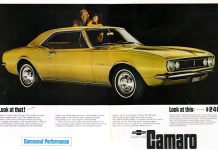


$7500 tax credit just expanded to cover more vehicles up to $80k. Through some definitional hokey pokey, basically any EV typically priced higher than $55k just became eligible for the tax credit. Remember when tax cuts for the “rich” was a thing Demonrats were against?
https://www.cnbc.com/2023/02/03/biden-ev-tax-credits-tesla-suv.html
So the US fedgov changed its definition of ‘SUV’ … just as they changed the definition of ‘vaccine’ in 2021.
In both instances, powerful corporate interests lobbied the fedgov, got what they wanted, and now are lining their pockets at the expense of you and me.
Probably the US fedgov is more corrupt than Mexico or Nigeria, and approaching the world-class Ukrainian level of corruption, thanks to our wonderful partnership with Zelensky. /sarc
https://s3mag.com/most-of-the-legacy-car-manufacturers-wont-make-it/
Just gonna leave this here
these sell….great quality….lol
Tesla Model Y Steering Wheel Falls Off While Driving, One Week After Delivery
https://insideevs.com/news/640947/tesla-model-y-steering-falls-off/?fbclid=IwAR1xeppaMGneBjqpfIefQhM_pufn3eZ88m28TXN4NYh_YCQeaX2nkUlD7oA
‘to point out the elephant in the room – it continues to be necessary to subsidize [EeeVees].’ — eric
And even then, it’s like pushing on a string:
‘Electric vehicle sales at Ford dipped to start the new year, showing how confused car buyers are about new tax incentives and how unwilling they are to pay high prices.
‘In January, Ford sold 5,247 electric vehicles in the U.S., compared with 7,823 in December.
‘F-150 Lightning sales were 2,264 in January, down 4% from December’s 2,359. Mustang Mach-E sales came in at 2,626, off 45% from the 4,775 SUVs in December. Ford also sold 357 E-transit vans.’
https://www.marketwatch.com/articles/ford-electric-vehicle-sales-mach-e-lightning-51675354609
These are pathetic numbers. Would you invest billions in battery and EeeVee assembly plants based on these chickenshit volumes? Me neither!
I’m lovin’ it, watching auto makers getting hammered by the $55,000 price ceiling their own lobbyists stuck into the Inflation Reduction Act in a 3 a.m. dirty deal. Y’all shit the bed; now lie in it, losers, with your crooked Congress Clown friends.
It’s no longer about product, it’s about Agenda. Vehicles that are useless for transport aren’t much different than food filled with poison, healthcare designed to kill, voting machines that don’t count…etc. Ford is merely a front anyway, no different than Biden. You’re buying a vehicle from Blackrock or Vanguard most likely.
Governments are about to introduce Climate Change Lockdowns disguised as “15 Minute Cities” under the UN Agenda 2030 directive & WEF Great Reset plan
https://expose-news.com/2022/12/13/climate-change-lockdowns-15-min-city/?fbclid=IwAR2P-cHv2YWlBkixYl_9Ci8-u4CGlCOoHcOuJPEtBsAxAJdUozaSzEvEW_o
They forgot to tell low IQ EV buyers this….
A lithium battery loses 1-2% of its storage capacity per month, making it useless in 5-6 years. $25,000 replacement cost. It is a horrible technology.
I have a Genesis GV-70 3.5T on order from the factory. It will take 3 – 6 months to be delivered, they say. If they come back and say “no, can do. here’s $2500 credit toward an EV”, I say:
Fuck you. I’ll go ahead and get one of those 2019/2020 GLE 43 AMGs that I’ve also had on my short list and you can kiss my ass!
I double dog dare ’em. Try me.
So how does this vehicle as a service thing work in real life? I thought that manufacturers sell cars to dealers and that dealers sell loans and service to customers with the vehicle as the medium. In other words, the dealers make the money mostly by service, loan, and warranty fees.
I’m not sure where rental car companies (e.g., Avis, Budget, etc) buy their fleets from but I know that they have mechanics and that they like to sell “gently used” cars out of their fleets.
Are they trying to say that, not only will dealerships and rental car companies no longer exist but that the manufacturers will become rental car companies complete with their own service bays and mechanics?! And they won’t be selling the used inventory to suckers after they’ve been “gently used”?!
Come the fuck on! We can just save everyone the trouble and burn them all to the ground now and go back to horse and buggies. It’d probably make better sense.
Horse emissions and carriage inspections. But the horses won’t eat bugs and their farts will raise the sea level. So, it’s not gonna work.
No one required a subsidy to move from tube TVs to LCD/LED.
It was a better technology that was lighter, wall mountable, allowed for high def & used less electric. You can get a 80 inch TV now for less than an old projection TV.
People bought them because they were better. Offer a better car & people will buy.
You know, electric companies have been doing this for decades already. Instead of encouraging more electric use, they have largely done the opposite. Now we have light bulbs, major appliances and the like that don’t work very well, because their main goal is less electric use, not top performance of the intended use of the customer.
In the summer they can barely keep the lights on as they try (and now often fail) to keep up with air conditioning……..
Jim H…..couldn’t agree more
“Achtung: I do not want my vehicle upgrading to iOS 16 while I sleep. I do not even want a stupid screen cluttering up the dash. I want knobs that turn, levers that slide, and three freaking pedals on the floor. Is that too damned much to ask?”
Their cars might be getting “smarter” but the auto execs are getting dumber. For the hell of it I looked up the original Mustang sales figures…after is introduction in ’64 and seeing the immense popularity they ramped up production to sell 559,451 cars in ’65, 607,568 in ’66 and they kept this going at the rate of 300,000 to 200,000 per year all through the ’70s. If you consider they were built on, what we would now consider to be primitive assembly lines, obviously someone knew how to allocate production back then.
If you factor in Toyota can keep build quality up at the Rav4 rate….its almost like they don’t know what they are doing or they are deliberately sabotaging their business.
I don’t let my imac (apple probably the least worst software company) do automatic updates and I wouldn’t want a car doing it either. Software is far too buggy and glitchy to update right away. I have “updated” software far too often to find something pretty major broken after its done. Then what do you do?
Only update after its been out a while and patched after others find the glitches and problems. I am not a beta tester, but an end user that wished software was far better than it is today. We put up with some pretty pathetically bad software, and automakers are known for being terrible.
So glad I got my Bronco when I did, love her.
Who in there right mind would want a Douchestang? If I were in that position, I’d still stick it out, though if it were last year before the end of the S550’s, I’d use it towards a 5.0 vert instead.
When will this electric insanity end? Thank God for the used market
It’s pretty clear that the business “plan” of most automakers is ride renting. At this point it can’t be anything else.
They think they will make far more money renting cars rather than selling them. It could work if they were staying with gas and diesel, because those vehicles could operate nearly 24/7 with basic maintenance. They would also last long enough to make money, as most would easily make it to 250,000 miles or more without major work.
Electric on the other hand can’t do that, as no EV can operate 24/7 as they will need to be recharging at least half the time. That is a huge problem that will make it unprofitable as you would have to double your fleet to be able to provide as many rides as a gas car.
And that doesn’t account for the batteries will need to be replaced constantly. Most EV’s used as ride shares would likely need replacement batteries before 100,000 miles.
I think at some point they will REFUSE to sell you a car, even if you can afford it. Not that there will be anything you will want to actually buy.
richb, as more items move from purchased to subscription, I would not be surprised to see autos trying the same model.
No fee, no update or support for errors. Maybe it won’t even turn on.
I think they sort of tried with Cadillac already, more a lease, but not a specific vehicle. It was not inexpensive and I think very few subscribed. You could change out the vehicles if you needed something else (not that there is a whole lot of variety with Cadillac models any more).
The groupthink among the managerial class is astounding. It seems the fad of the day is for manufacturing concerns to take losses selling the hardware in order to make profits on the licensed, subscription software a la the big tech companies. This guy says it more directly but it seems to be what Farley at Ford is getting at.
https://www.cnbc.com/2023/02/01/peloton-ceo-barry-mccarthy-doesnt-care-bikes-treads-lose-money.html
That was the model Polaroid had back in the day. They sold the cameras at cost but then you had to buy the film from them; worked great until digital photography came along.
OT: elimination of parking spots
Pull quote: “The car’s grip over city planning has been difficult to dislodge, despite a host of costs to the environment and to the quality of life for many city dwellers.”
https://arstechnica.com/cars/2023/02/city-planners-are-questioning-the-point-of-parking-garages/
Of course the real problem is the zoning, other government regulations and “minimum” standards of new construction, not the existence of parking garages. But that is of course not noted in that article.
Just another hit piece on cars in general, “how dare you own” a personal private car in the city. Of course it parked 95% of the time, its my PRIVATE car, I don’t drive 24/7. Never mind that even after all the many things city “planners” do to annoy car owners, a private car is STILL the best way for the majority to get around in most cities.
I live in the suburbs. If you want my business, you better have a place for me to park, because that is how I get around. If you make it annoying, expensive and the like, I will probably take my business somewhere else. It really is that simple. I used to go to the city (Chicago) often for fun things, but due to increased costs, the annoyances of parking and now Covid nonsense, I just don’t do it very often anymore. At this point the only time to go to the city is to pick up someone from the airport.
‘almost no one wants to point out the elephant in the room – it continues to be necessary to subsidize [EeeVees].’ — eric
Here’s a barf-inducing tweet from “Biden,” at the wheel of a deformed, elephant-sized EeeVee, touting his subsidies like a plaid-suited ‘closer’:
https://twitter.com/POTUS/status/1620138541937205250
I could swear that’s Jimmah Carter at the wheel, sporting his trademark toothy grin.
Has anyone actually seen “Biden” and Carter in the same room? :-0
I clicked on that link. He’s in an absurd vehicle, an electric Hummer, that’s a really in your face mockery and smugly characterizes the reality of the rich folk only EV future they know will be the case since it isn’t even eligible for the subsidy. I don’t Twitter beyond reading an odd link like yours here and there. Some real internet sewage on that site.
Biden Promotes EV Hummer That Pollutes More Than Gas-Powered Sedan
The average ev gets 20 mpg……..the Hummer ev gets 10 mpg….
https://www.zerohedge.com/technology/biden-sits-ev-hummer-pollutes-more-gas-powered-sedan
Hi Eric,
I like your label the “New Abnormal”. That’s exactly what it is, I for one will never accept the status quo as the “New Normal”. The truth is filtering out slowly despite the PTB attempts at censorship, we need to keep pushing back hard against these evil s.o.b.’s.
“We now live in a nation where doctors destroy health, lawyers destroy justice, universities destroy knowledge, governments destroy freedom, the press destroys information, religion destroys morals, and our banks destroy our economy ” – Chris Hedges
This was opening paragraph of a James Kunstler article I read this morning. (https://www.lewrockwell.com/2023/02/james-howard-kunstler/the-war-against-us/)
Could easily append it by adding “car companies destroy conveyance.”
‘Fundamental change for us is…. being able to have a digital product where you make the product better every day through over-the-air updates.’ — Jim Farley, Ford CEO
Fundamentally, car makers have a chronic self-esteem problem, since their golden growth era of the 1920s ended, a full century ago.
High tech moved on. By the late 1950s — the Sputnik era — it was rocketry and fly-boys they envied. So they put 2-foot high tail fins on the 1959 Cadillac, in homage to scrappy guys in flight suits who were cooler than they.
Now in the chip era, Silicon Valley is vastly richer and more dominant than car makers ever were. Not everyone owns a car, but nearly everyone including kids owns a cell phone.
So now, fragile-ego auto makers want to make 4-wheeled cell phones, to ape the cool kids who design 3 nm chips, not 3-ton vehicles. But this needlessly complex chimera of brawn and microchips ain’t fit for purpose, especially in its EeeVee incarnation.
Achtung: I do not want my vehicle upgrading to iOS 16 while I sleep. I do not even want a stupid screen cluttering up the dash. I want knobs that turn, levers that slide, and three freaking pedals on the floor. Is that too damned much to ask?
Medically, Jim Farley can be diagnosed as suffering from koro, a culture-bound delusional disorder in which men fear their sex organ is retracting and will disappear. Tie a string around it, Jim, and get EeeVee Mary to hold it for you.
Car of the century…..
The 1928 to 1932 Mercedes-Benz SSK (W06)
If asked about the most desirable Porsche, some collectors might cite the Porsche 356 Speedster, which helped establish the Porsche legend, or the nearly unbeatable Porsche 917, which has been etched into the psyches of enthusiasts by Steve McQueen’s Le Mans.
Few would include the Mercedes Benz SSK, but this would be an oversight. While it does not display the Porsche name, the SSK bears the direct imprint of Dr. Ferdinand Porsche. It was the last car he personally designed as an engineer for Mercedes before he left under tempestuous terms to found his own company.
The 1928 to 1932 Mercedes-Benz SSK is completely mechanical, no electronics so it can last 100 years, still working perfectly…….it is a rolling work of art, built like a tank, over engineered.
These were very successful race cars, you could drive it to the race track and win the race.
The SSK was driven to victory in numerous races, including in 1929 the 500 Miles of Argentina, the 1929 and 1930 Cordoba Grands Prix, the 1931 Argentine Grand Prix, and, in the hands of legendary Grand Prix racing driver Rudolf Caracciola, the 1929 Ulster Tourist Trophy race (Ards road circuit), the 1930 Irish Grand Prix, the 1931 German Grand Prix, and the 1931 Mille Miglia.
The S/SS/SSK line was one of the nominees in the penultimate round of voting for the Car of the Century award in 1999, as chosen by a panel of 132 motoring journalists and a public internet vote
The new cars today are plastic and full of electronics and computers that have a short lifespan, the EV’s are far worse….. when the dangerous, very expensive $22,000 battery dies, they are too expensive to fix, so are scrap, polluting the landfill.
The Mercedes-Benz SSK is a roadster built by German automobile manufacturer Mercedes-Benz between 1928 and 1932. Its name is an acronym of Super Sport Kurz, with the last word being the German for “short”, a reference to the fact that the car was based on the earlier Mercedes-Benz S, but with 19 inches (480 mm) chopped from the chassis to make the car lighter and more agile for racing.
The 7 litre…427 ci supercharged inline 6 cylinder engine would put out somewhere between 200 and 320 horsepower, and 508 lb-ft or torque @ 2000 rpm, a low rpm engine that would last for a century….
These were real driver’s cars…an open car, no doors, manual steering and transmission, no driver’s aids….. AI driving the car, a pure analog driving experience, no seatbelts or airbags, etc,
The Lotus Super 7 looks like a very light, small scale, shrunken copy of the mercedes SSK…did Lotus copy it?
Mercedes Benz SSK, 1929, Supercharged, 7.1 litre 6 cylinder 250 PS/246 hp, 220 km/h
https://www.youtube.com/watch?v=PVXH3yuxKo4
“increased” by 5 percent this week – even though it had been cut by 5 percent the week before.”
The 5% cut is larger than the 5% increase, since it’s 5% of a larger number.
That aside, automakers continue on the path to suicide. They will end up selling less than half the overall volume they are now. Which means half or more of the automakers will go belly up. Or get bailed out with Fed funny money. In addition, the repossessed cars hitting the market this year will drive down demand for new cars. And consequently prices. Which will hurt car makers regardless how “green” they are, or are not.